WBR0571
Jump to navigation
Jump to search
| Author | [[PageAuthor::Rim Halaby, M.D. [1] (Reviewed by Yazan Daaboul, M.D.)]] |
|---|---|
| Exam Type | ExamType::USMLE Step 1 |
| Main Category | MainCategory::Pathophysiology |
| Sub Category | SubCategory::Neurology |
| Prompt | [[Prompt::A 22-year-old woman presents to her primary care physician for acute right arm weakness. The patient woke up this morning and felt that her right arm is heavy, and she could not lift it. She does not recall any history of trauma to her arm or similar previous episodes. Upon further questioning, the patient's past medical history is significant for one episode of acute vision loss in her right eye that resolved spontaneously almost one year ago. Neurological examination reveals decreased sensation and motor strength in the right upper extremity, in addition to loss of vibratory sensation in the left lower extremity. Which of the following images of the spinal cord represents the site of the lesion of the patient (lesion in red)?]] |
| Answer A | [[AnswerA::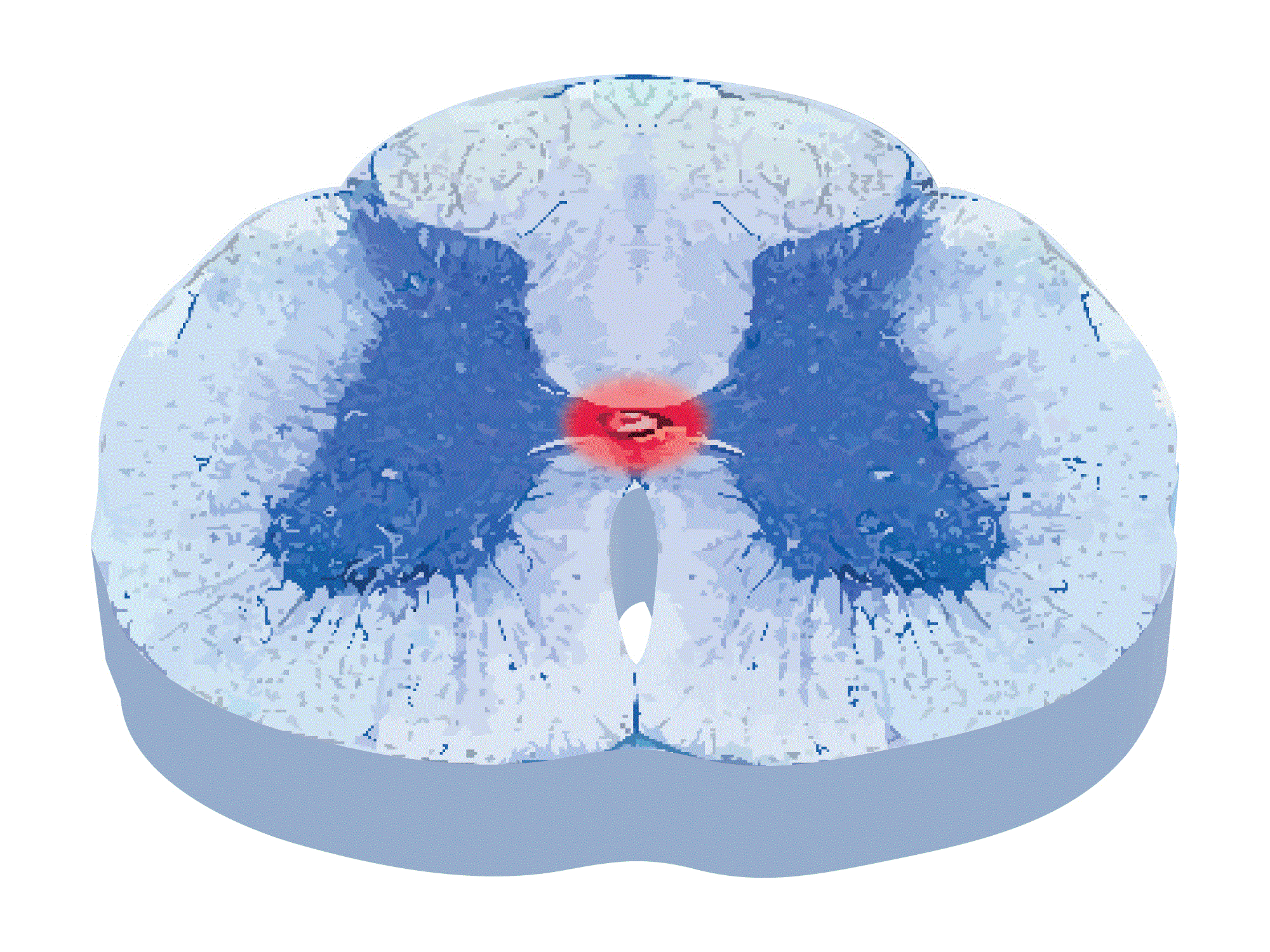 ]] ]]
|
| Answer A Explanation | AnswerAExp::This image depicts an expanding central canal compressing adjacent tracts typically observed in patients with syringomyelia. |
| Answer B | [[AnswerB::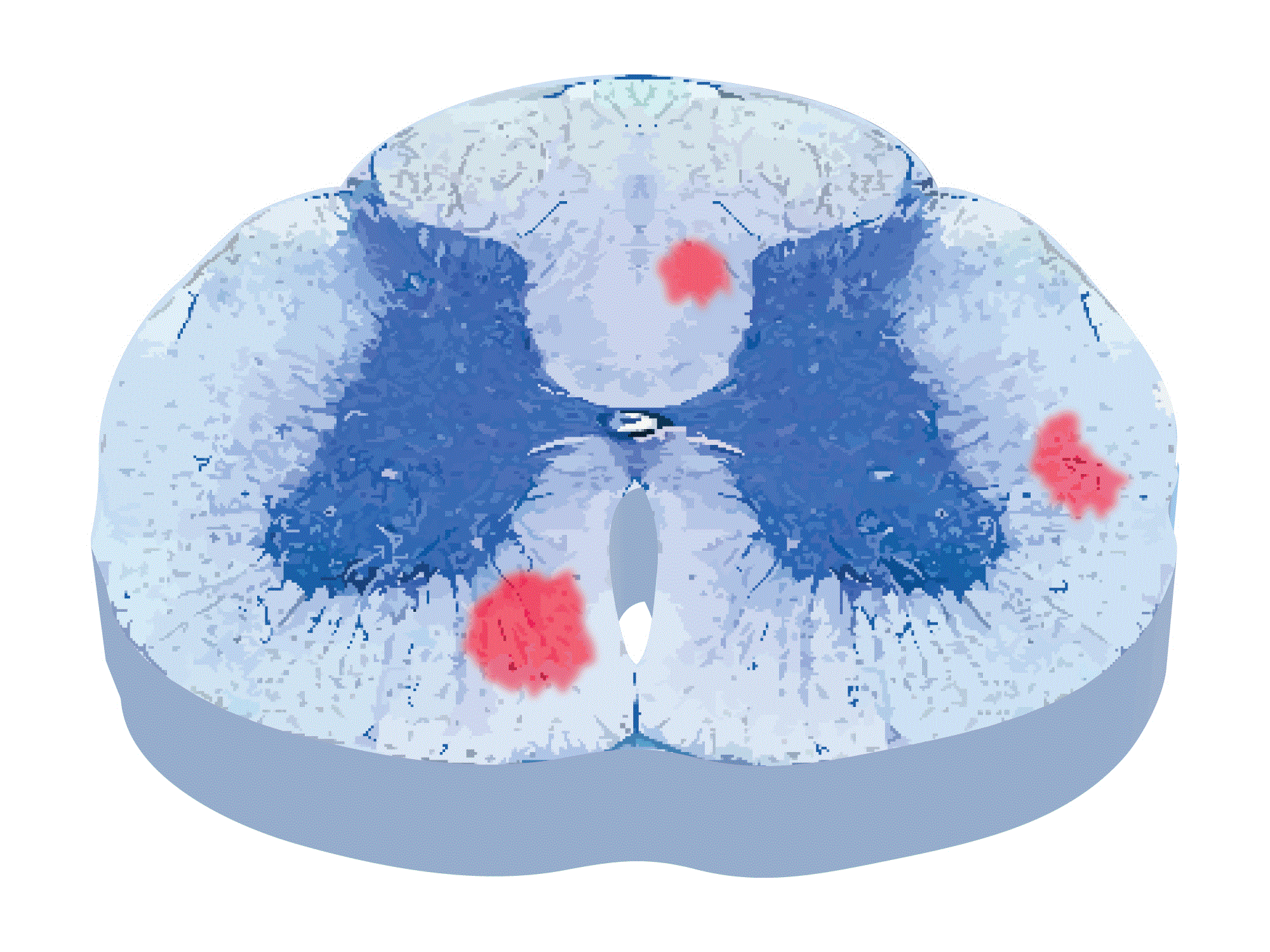 ]] ]]
|
| Answer B Explanation | [[AnswerBExp::This image depicts asymmetric lesions in the white matter, which is characteristic of multiple sclerosis.]] |
| Answer C | [[AnswerC::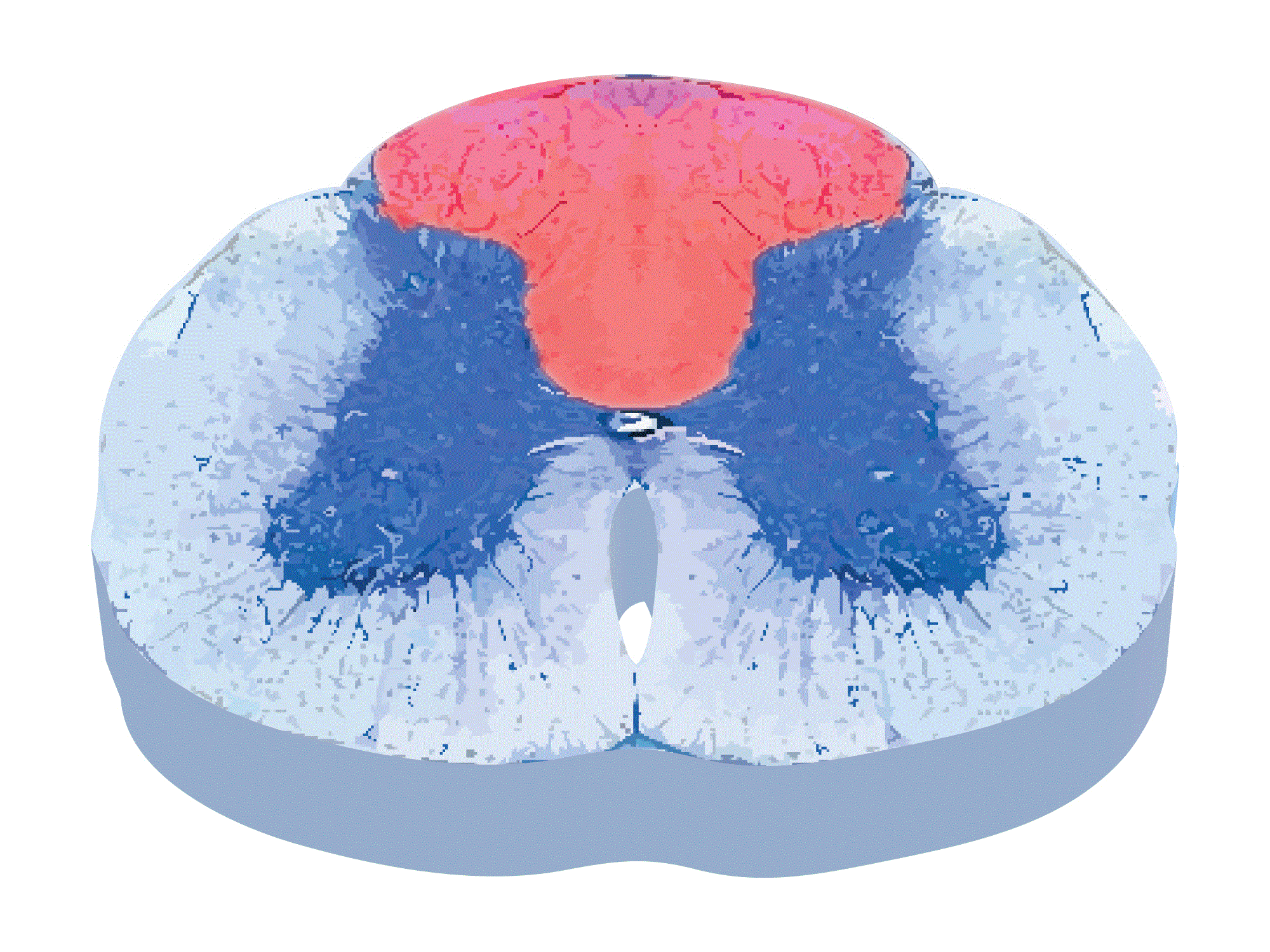 ]] ]]
|
| Answer C Explanation | [[AnswerCExp::This image depicts the involvement of the dorsal columns of the spinal cord that carry the ascending proprioception, pressure, touch, and vibration sense pathways. Tabes dorsalis due to tertiary syphilis is caused by degeneration of the dorsal columns and roots.]] |
| Answer D | [[AnswerD::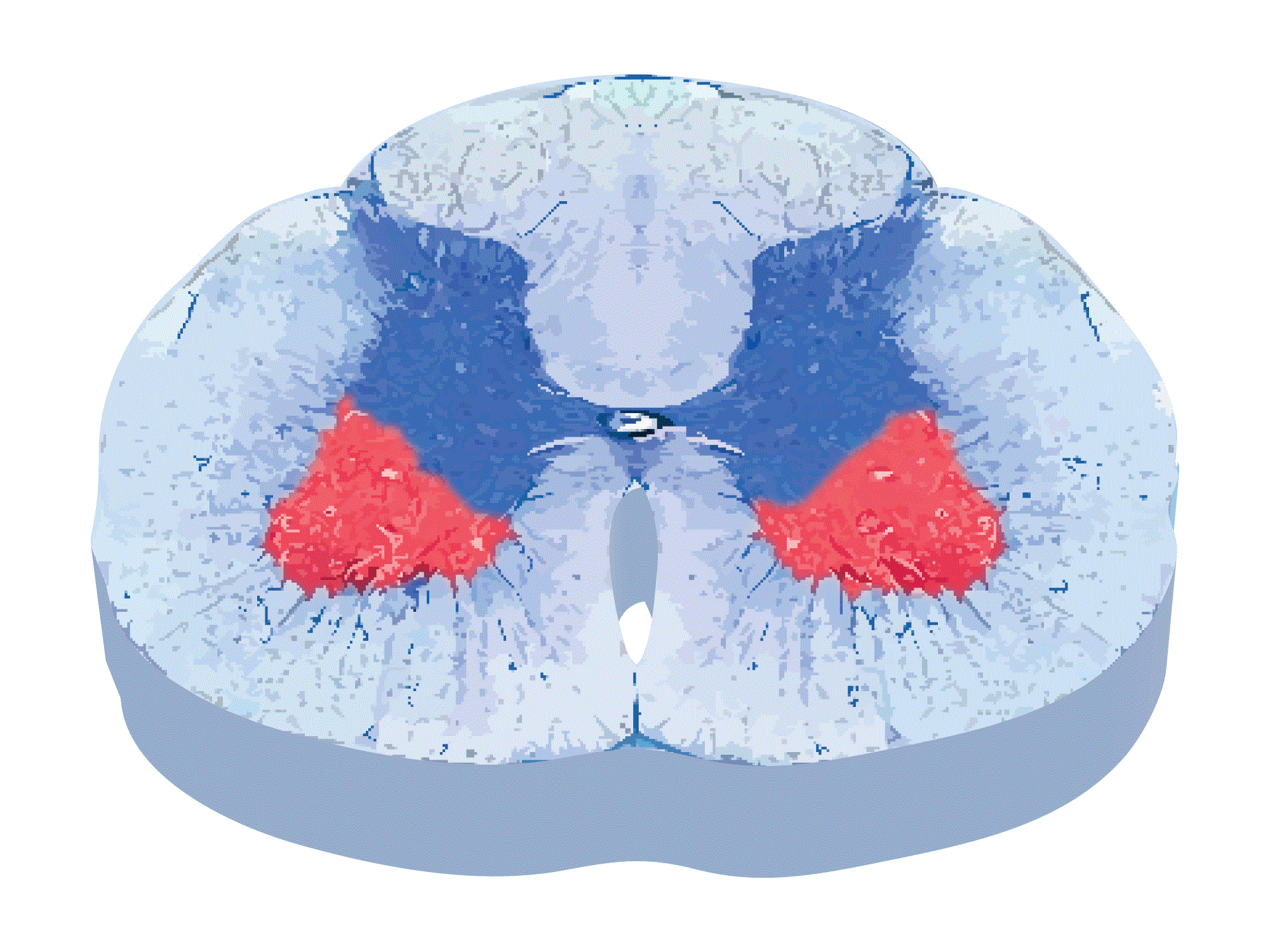 ]] ]]
|
| Answer D Explanation | AnswerDExp::This image depicts isolated anterior horn injury typically observed in patients with poliomyelitis or Werdnig-Hoffman Syndrome (Floppy Baby Syndrome). |
| Answer E | [[AnswerE::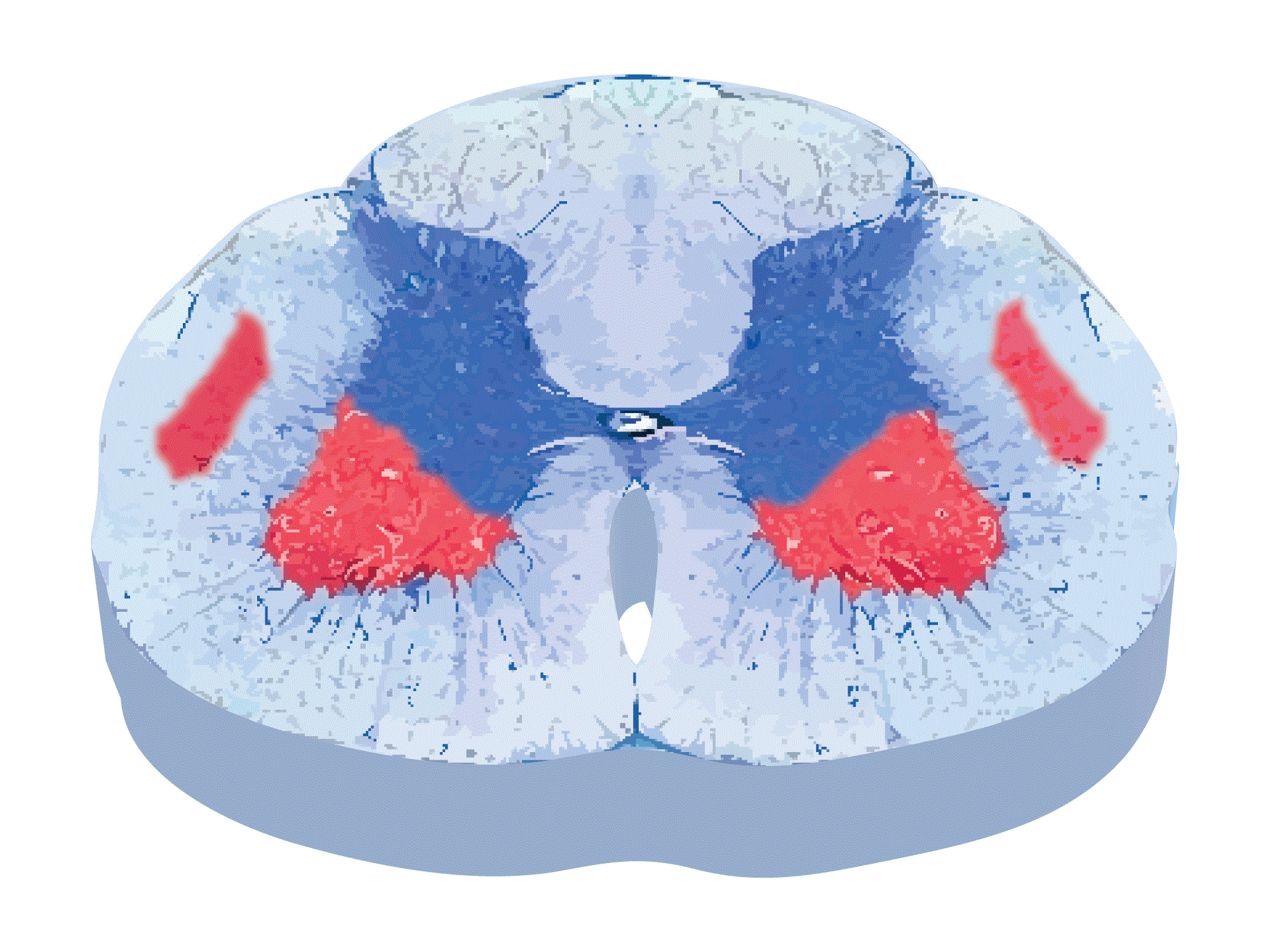 ]] ]]
|
| Answer E Explanation | [[AnswerEExp::This image depicts lesions in the white matter and grey matter. This pattern of lesions is classical of ALS, where patients usually present with upper and lower motor neuron disease with no sensory involvement.]] |
| Right Answer | RightAnswer::B |
| Explanation | [[Explanation::Multiple sclerosis (MS) is a chronic autoimmune disorder of the CNS. MS is a demyelinating inflammatory disease that usually involves the white matter of the cervical region. It features asymmetric lesions due to the autoimmune myelin and axonal destruction. Although the etiology of the disease is still unknown, it is believed that MS may be caused by environmental triggers in genetically predisposed individuals. It commonly affects women aged between 20-45 years. In the majority of cases, manifestations of MS are reversible neurological deficits in the early stages of the diseases with progression to irreversible deterioration. The disease course may be any of 4 types: relapsing remitting (most common) characterized by flare-ups followed by period of remission, secondary progressive characterized by an initial relapsing remitting course that transforms into continuous deterioration in later stages, primary progressive characterized by early continuous deterioration, and finally progressive-remitting course characterized by a continuous deterioration with intermittent flare-ups in the absence of remission periods. MS is generally suspected by history and physical examination. Classical signs and symptoms include scanning speech, loss of vision due to optic neuritis, diplopia, and bilateral trigeminal neuralgia. Other common signs and symptoms include spasticity of the extremities, paresthesias, dysesthesias, ataxia, vertigo, and urinary dysfunction. The diagnosis is often confirmed by brain MRI that shows multiple periventricular plaques at various levels, and lumbar puncture that shows evidence of inflammation and oligoclonal bands. Therapy of MS aims to decrease the intensity and the frequency of acute flare-ups and to improve patient quality of life. Pharmacological therapy of MS includes beta-interferons (naturally-occurring cytokines), glatiramer acetate (a synthesized copolymer polypeptide), mitoxantrone (a synthetic antineoplastic agent), natalizumab (a recombinant humanized immunoglobulin monoclonal antibody), and fingolimood (a sphingosine-1-phosphate receptor modulator). Educational Objective: Multiple sclerosis is characterized by patchy asymmetric lesions of the white matter in the central nervous system. |
| Approved | Approved::Yes |
| Keyword | WBRKeyword::Spinal cord, WBRKeyword::Multiple sclerosis, WBRKeyword::Autoimmune, WBRKeyword::Neurodegenerative, WBRKeyword::Neurodegeneration |
| Linked Question | Linked:: |
| Order in Linked Questions | LinkedOrder:: |